A fake Imperial Easter egg

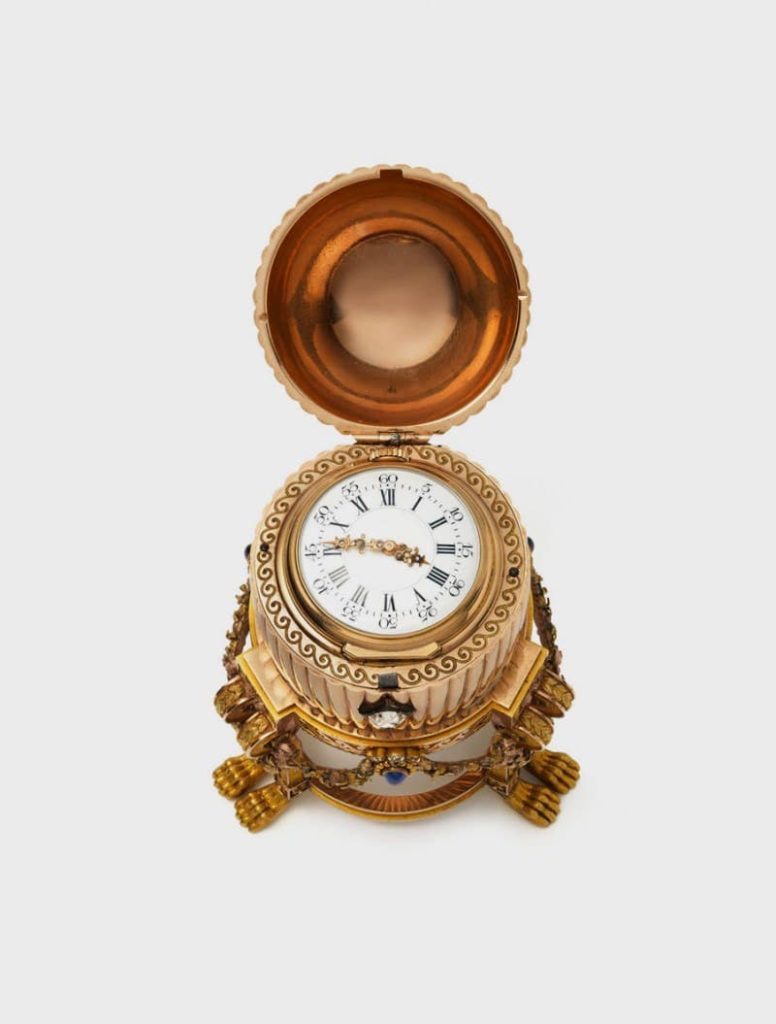
A fake Imperial Easter egg, sold to the Middle East a few years ago, will be on display at the Victoria & Albert Museum.
The exhibition of this fake egg is organized by Wartski’s managing director, Kieran McCarthy. The exhibition titled, “Faberge in London: Romance to Revolution”, is scheduled to open in November 2021.
The items presented at the exhibition deserve much attention and admiration, with the exception of the Easter egg of 1887, which has no documentary sources to confirm its origins. Only a photograph of an exhibition of Faberge items in the house of Baron von Derviz (in St Petersburg) has survived.
Photos of this exhibition are kept in the Moscow Kremlin Museums. A close comparison between the photo and the egg clearly shows that the egg holder in the photograph and the egg holder on display are not authentic.
The egg’s ‘surprise’ is a Vacheron Constantin time piece, which in general could not be included in Faberge’s items. In addition, the Vacheron Constantin wristwatch, which was inserted as a ‘surprise’ on this fake egg, was produced much later than 1887, as can be verified at the Vacheron Constantin company, which still exists today.
McCarthy positions this egg together with the 1887 Imperial Easter Egg featured in the book, The Fabergé Imperial Easter Eggs (1992), by T. Faberge, V. Skurlov, Lynette G. Prohler ISBN 0-903432-42-X.
McCarthy is not even embarrassed by the fact that the clock egg presented in this catalog, which is the property of His Serene Highness Prince Albert II of Monaco, has already been published and recognized by all experts.
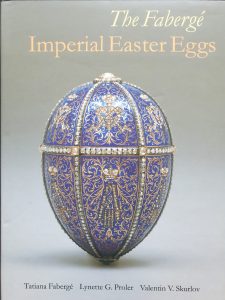
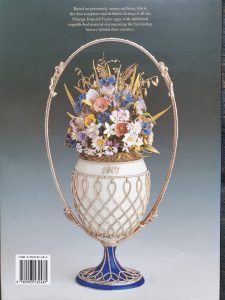
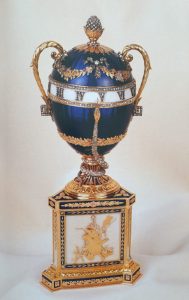
Let’s take a look at the facts:
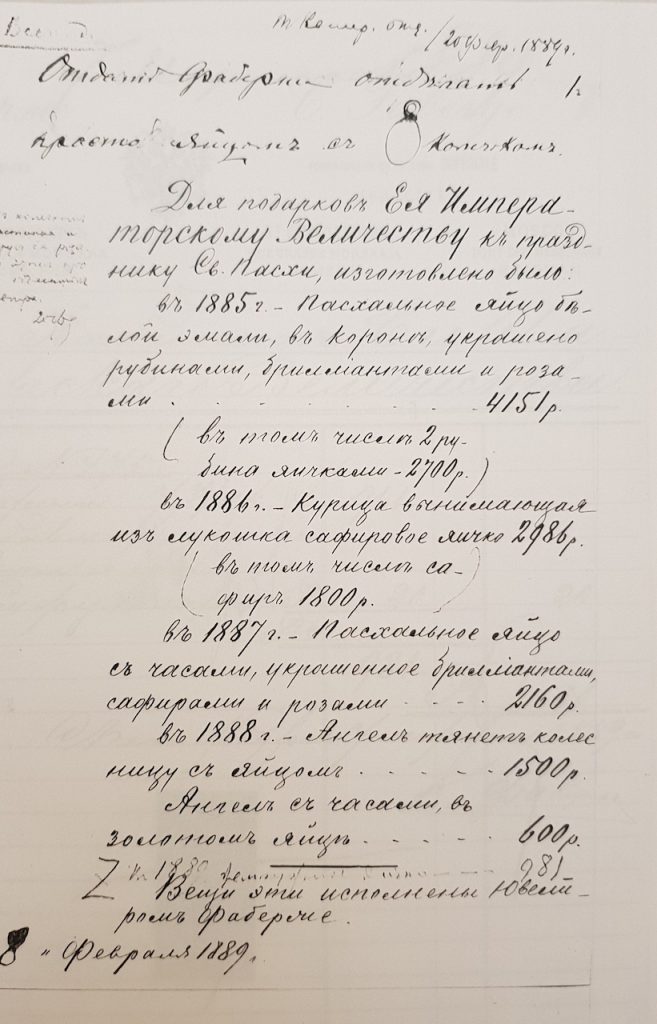
“Aufstellung des Ministeriums des Imperator Hofes vom 8. Februar 1889
Für die Geschenke Ihrer Imperatorin Majestät wurden zu Ostern hergestellt:
- Im Jahre 1885 – Oster Ei, weiße Emaille, die Krone geschmückt
mit Rubinen, Brillanten und Rosen 4.151 R.
innen drin zwei Eierchen aus Rubinen 2.700 R. - Im Jahre 1886 – Huhn nimmt aus dem Korb
Saphireierchen 2.986 R.
(Saphir insgesamt 1.800 R.) - Im Jahr1887 – Oster Ei mit Uhr
geschmückt mit Brillanten, Saphieren und Rosen 2.160 R. - Im Jahr 1888 – der Engel zieht Wagen mit Eierchen 1.500 R.
- Engel mit Uhr 600 R.
(Uhr im goldenen Ei)
Diese Objekte wurden wurden vom Juwelier Fabergér hergestellt.
8. Februar1889″
In a memorandum from the Ministry of the Imperial Court dated February 8, 1889, describing the gifts to Her Imperial Majesty for Easter made by the Faberge firm, this egg cost huge amount of money – 2,160 rubles in 1887.
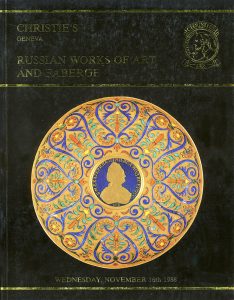
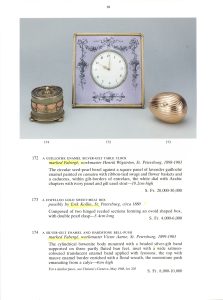
You don’t need to be an expert to understand that McCarthy’s fake egg couldn’t cost that much money in the days of Faberge, considering the lack of expensive materials and work. According to archival documents, the 1887 Imperial Easter Egg should be adorned with diamonds, sapphires and “roses”, which is simply not the case in the fake McCarthy egg. RGIA has preserved the original description of the 1887 Imperial Easter Egg, which has nothing to do with the fake McCarthy egg.
The egg itself is not a work of art. Similar cheap eggs were produced in the late 19th and early 20th centuries. There were many. A striking example is the exact same egg, lot 173, sold at Christie’s in Geneva on November 16, 1988.
This egg is not even attributed to Faberge, but it’s an exact replica of the fake McCarthy egg.
After opening the McCarthy egg, the heavy upper half outweighs the entire structure and, even with a stand, cannot be opened steadily, since it falls back. This shows that Faberge could not have done such a terrible example of poor craftsmanship.
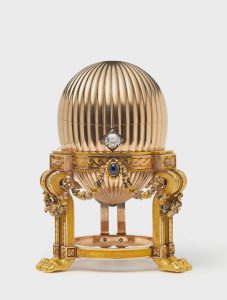
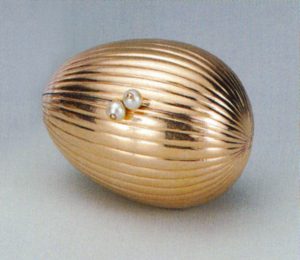
As Western experts always like to say, the Imperial Easter eggs were never repeated. They could only use small elements and decor in subsequent works, and it’s enough to compare these two eggs. Since the sizes of these comparable eggs are identical, the question arises whether the fake McCarthy egg is a converted egg from the Christie’s catalog dated November 16, 1988. In any case, this is easily verified during the technical examination of this product. The egg holder is a low quality contemporary work based on a photograph from the Armory.
But in the manufacture of this stand, the scammers did not consider the observance of the item’s proportions. On the sides on the stand’s legs, the entire surface is treated with rough modern garland that has been used in the jewelry industry since the 1970s. Also, the flower garlands are made by casting. What is striking here is the absence of any manual revision, which was always unacceptable for Faberge masters. The egg was sold to a collector in the Middle East as an imperial egg, without basing it on any archival documents.
Before the sale, this egg simply did not exist. A story was invented that the egg was bought somewhere in a flea market and that it had previously been in someone’s kitchen. There is simply nothing to say, except, “What nonsense”! https://jewellerymag.ru/p/faberge-egg-found/
In March 2021, at a jewelry conference in the Hermitage Museum, Dmitry Krivoshey gave a brief comment: “There is new information about the existence of the Imperial Easter eggs made by the Fabergé firm in the 1920s. Based on materials from Goznak, where, among other documents, the McCarthy egg suddenly surfaced with a full description and outline. In addition, other eggs were featured, including an egg with a chicken and an egg with porcelain figurines, that are now in the collection of the Faberge Museum in St. Petersburg.”
Krivoshey stated that the documents were recently found in the Goznak archive. After carefully studying the documents presented by Krivoshey, it became clear that they were all a forgery. All eggs mentioned in them could not have been collected at the same time and could not be described together. It is enough to trace the fate and movement of these Easter eggs after the Russian Revolution. There are numerous inconsistencies in the description of the eggs.
Any Faberge expert will understand this immediately, but since Krivoshey stated that copies of the submitted documents were found in Goznak, he had to ask this respectable institution to find these documents there. As expected, no such documents exist in the Goznak archive. In view of the fact that Krivoshey said that his speech was made together with V. Skurlov, I had to turn to him for an explanation. As in the case with the Goznak archive, it turned out that Skurlov has nothing to do with this report and the discovery of documents.
What happened in reality?
Literally during Krivoshey’s lecture, McCarthy phoned the conference organizers and thanked them for the documents found by the Hermitage. An egg out of nowhere is marketed as an imperial one. Then, at a conference in the Hermitage Museum, false documents about this egg were published and the buyers were informed that at last they found documents with a description and a sketch of this egg. And to top it all off, an exhibition will open at the Victoria and Albert Museum, where this fake egg is presented to the general public.
All this was done under a veil of deliberately false accusations targeted against the Hermitage Museum on the part of a previously unknown antiques dealer living in London, who is living there based on illegally obtained documents. https://riafan.ru/1434430-rassledovanie-fan-kto-stoit-za-informatakoi-na-ermitazh-i-vbrosami-o-nasledii-faberzhe

So, where are the experts? Géza von Habsburg, Alexander von Solodkoff, of course!!! And who are the judges? Let’s trace the sale and attribution of the fake Imperial Easter eggs by the experts Géza von Habsburg, A. Von Solodkoff and T. Muntyan.
Let’s start with the recently discovered and sold 1902 fake Imperial Easter Egg.
This fake was approved in 2003 by Von Solodkoff and Muntyan with the direct participation of Géza von Habsburg. These experts, in order to quickly sell this egg quickly, published in 2004 a colorfully designed book, Faberge. 1902 Empire style Easter Jade Egg, with a run of only 70 copies.
The egg was successfully sold for about $ 4 million. Time passed and it would seem that this whole story was forgotten for a long time. But this fake egg was bought not by a collector, but by an investor Richard Werner, who after a few years decided to sell it through a major auction houses and hopefully make millions on it. Suddenly it turns out that all the auction houses refuse to recognize this egg as real. An angry Mr. Werner tried to return the egg to the sellers, but he was refused.
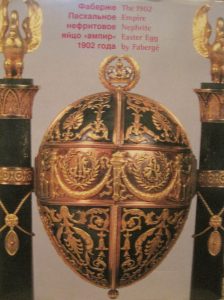
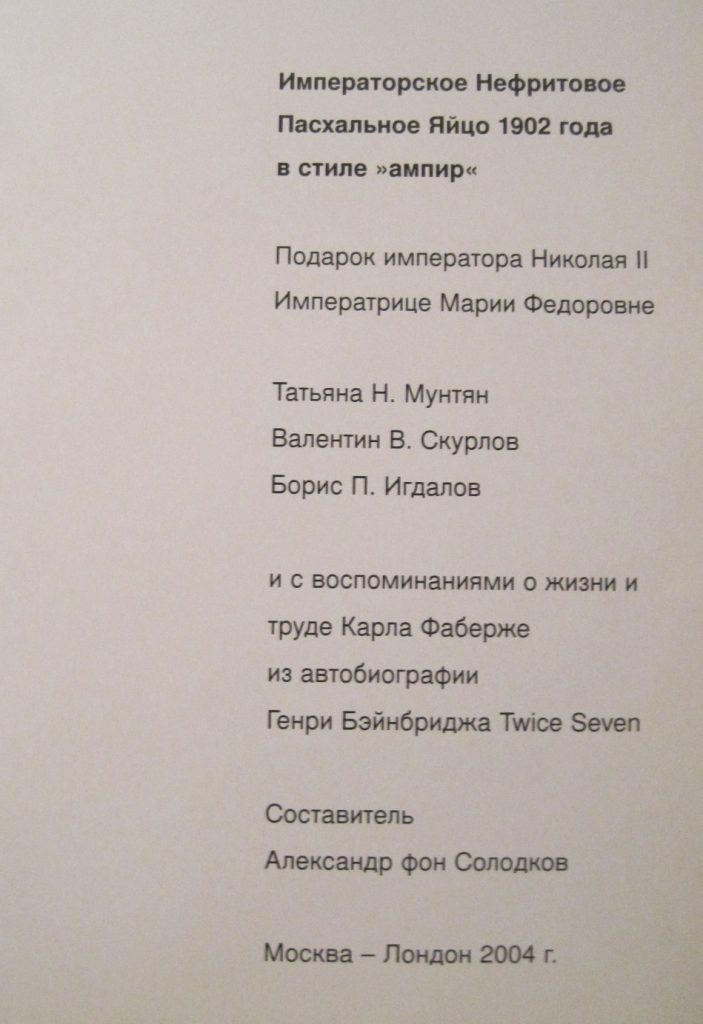
Suddenly all the authors of all the examinations and the book Faberge. 1902 Empire style Easter Jade Egg, also refuse to confirm it. Well, it turns out that they all changed their minds at once. Previously, they approved this egg when it was in their interest, but then suddenly they changed their mind.
Let us recall these experts: A. Von Solodkoff, T. Muntian, and Géza von Habsburg. The reader will probably think that these two episodes are an annoying oversight by the experts. Let’s reveal other stories about the sale of fake imperial eggs so that it is clear that these are not delusions at all, but a deliberate deception on their part.
The next item is an egg with a rabbit (Stavros Niarchos collection). In 1986 it was presented by Géza von Habsburg as an Imperial egg in the catalog of the exhibition “Faberge Court Jeweler of the Tsar”; held in Munich, 1986. Author: Géza von Habsburg.
The next fake Imperial Easter Egg, “Twilight”, was dated to 1917, and was confirmed by Géza von Habsburg.
The story of another fake Imperial Easter egg, confirmed by Géza von Habsburg, with the tacit consent of Alexander von Solodkoff, is indicative

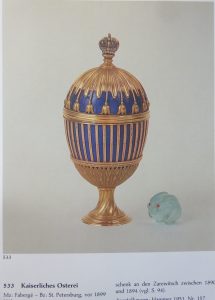
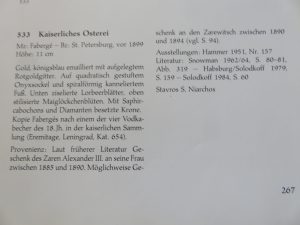

This fake imperial Easter egg, “Equestrian statue of Nicholas II”, was approved by Géza von Habsburg and Mr. Snowman. It was sold in Geneva in 1977 at Christie’s, where Géza von Habsburg acted as an expert. This egg had been exhibited at the 1949 Art Institute in Chicago.
The appearance at auctions of Imperial Faberge eggs is a kind of a feast for collectors. The presence of such items guarantees huge advertising to any auction house. As a result, this fake egg was bought in 1977 for $250,000 by Eskander Aryeh, a collector from New York, but when he came to pick it up, he refused to pay, because he immediately realized that it was a fake.
By court decision and on the basis of the attribution by Kenneth Snowman, (owner of the famous Wartski store in London), Mr. Eskander Aryeh was ordered to pay $ 400,000 (250 + 150,000 for legal costs). Then, in 1985, when desiring to sell this “egg” through Christie’s, he was shocked by the surprise that awaited him. They explained to him in a gentlemanly way that this egg is, after all, a fake!

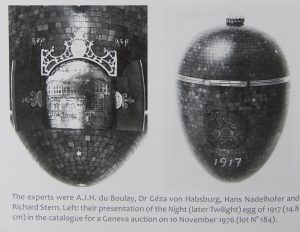
Since this fake egg had been confirmed by both Géza von Habsburg and Mr. Snowman, Eskander Aryeh turned to the management of Christie’s, but they then told him that Snowman and Géza von Habsburg would not confirm the authenticity of this egg. And for this reason, the egg would not be accepted back for auction!

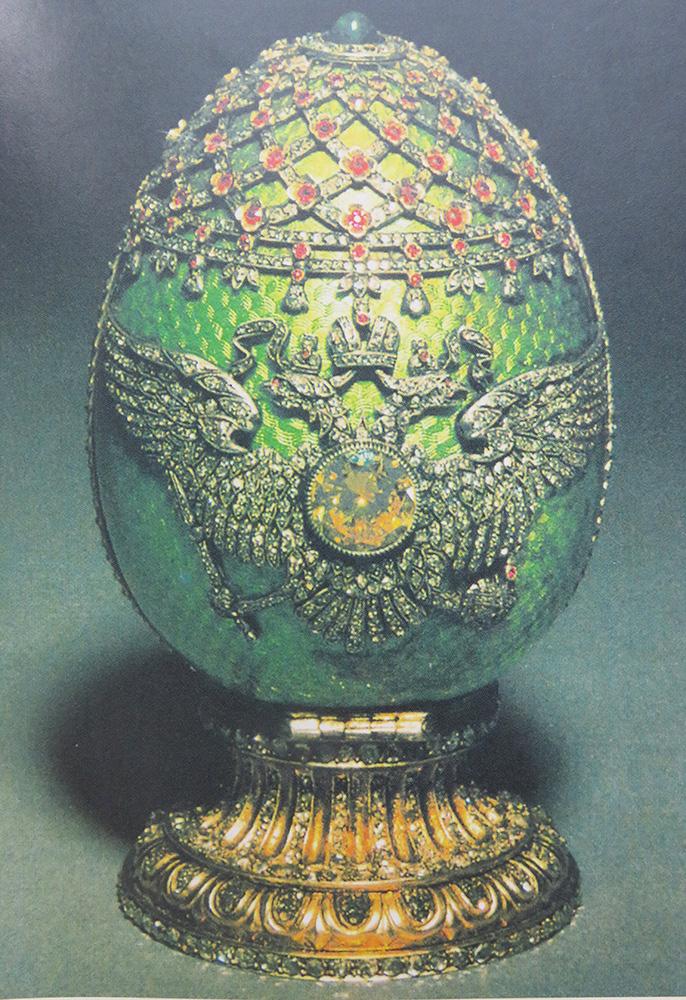
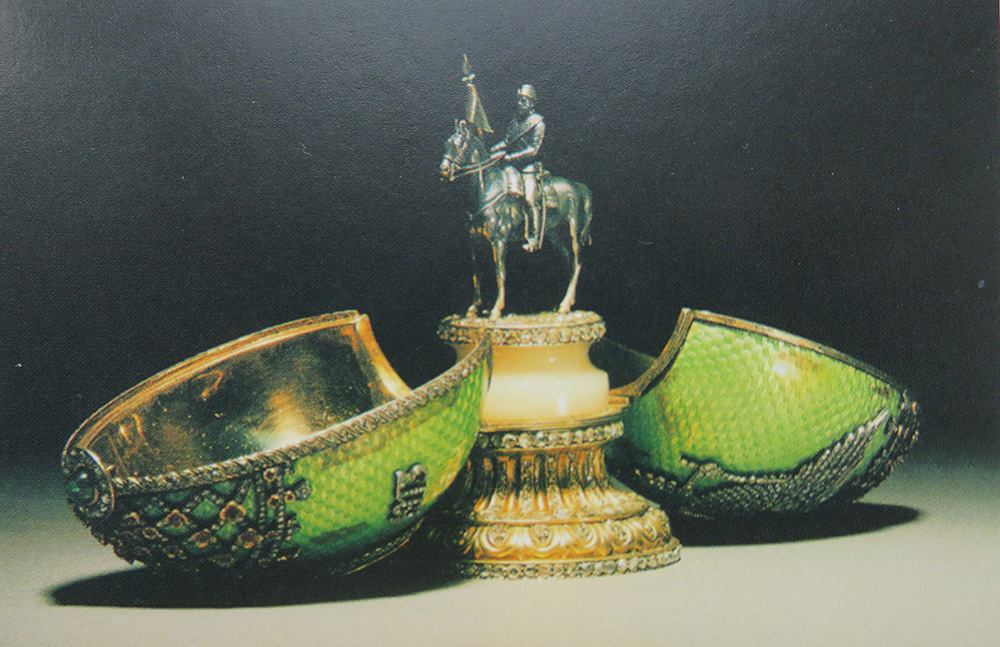
Eskander Aryeh didn’t like this arrogant approach at all, and since he was also a millionaire, he filed a lawsuit against Christie’s, in the amount of $ 37,000,000, for spoiling his business reputation. As a result, Christie’s still had to compensate him for financial and moral damage.
